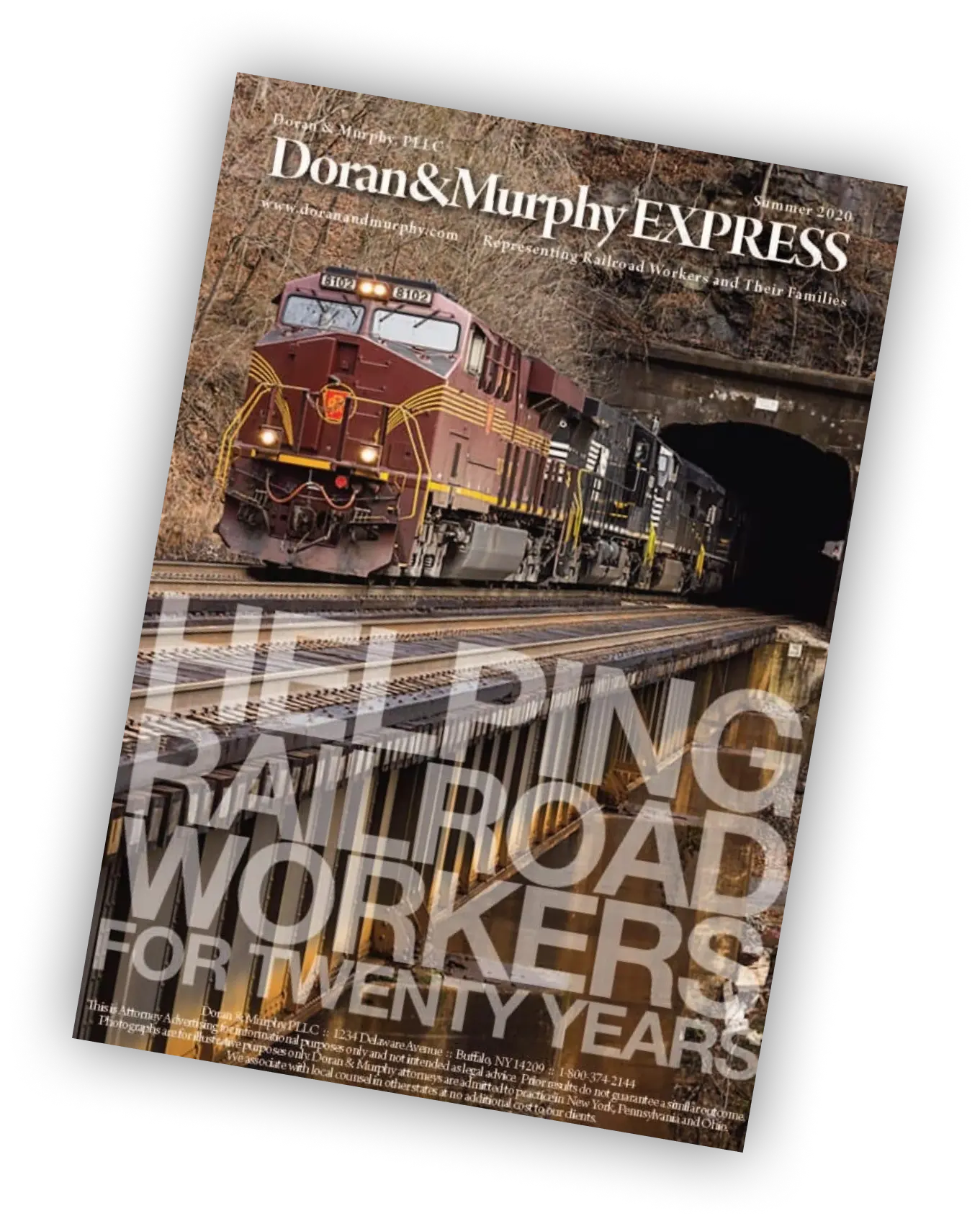
Railroad workers can suffer from a variety of on-the-job injuries. Thousands of railroad workers are injured every year in the United States. Railroad work can be dangerous work because it involves demanding physical labor usually alongside large, heavy–and often moving–railroad equipment. Injuries can occur when doing common railroad tasks like climbing, lifting, pulling, walking on railroad ballast, operating track switches, and running heavy equipment. Workers sometimes work from heights on locomotives or on rail cars, often with little or no safety equipment. Falls from heights are another way on-the-job railroad injuries can occur. Railroad workers can also suffer exposure-related injuries when they are exposed to toxic gases, dust, or fumes in their work.
Many different types of injuries can result from these railroad hazards. Exposure-related injuries can cause acute or chronic lung diseases. Crush injuries are common railroad injuries when some part of a worker’s body is caught between heavy objects. These injuries can range from fingers being caught in a crossing gate to catastrophic injury that can result when a worker is impacted by a moving locomotive. Slips, trips, and falls can result in broken bones, head injuries, and soft tissue injuries, like strains and sprains. Switching injuries can lead to hernias, muscle tears, and rotator cuff injuries.
Railroad workers are generally not eligible for state workers’ compensation benefits when they are injured. However, when the railroad is negligent or when it provides certain defective equipment, workers may recover financial compensation under a federal law called the Federal Employers Liability Act (FELA) for their on-the-job railroad injuries. Damages like pain and suffering, medical expenses and lost wages are recoverable under the FELA. Do not let the railroad claims department determine the value of your injuries. Let an experienced FELA attorney help you. If you or a railroad worker you know has been injured in an on-the-job railroad injury, call us for a free consultation.





